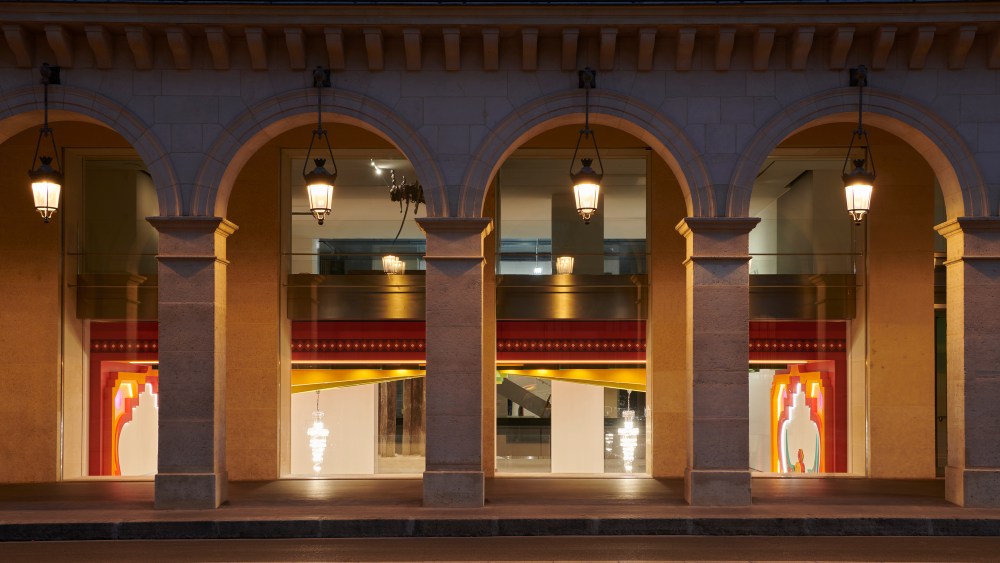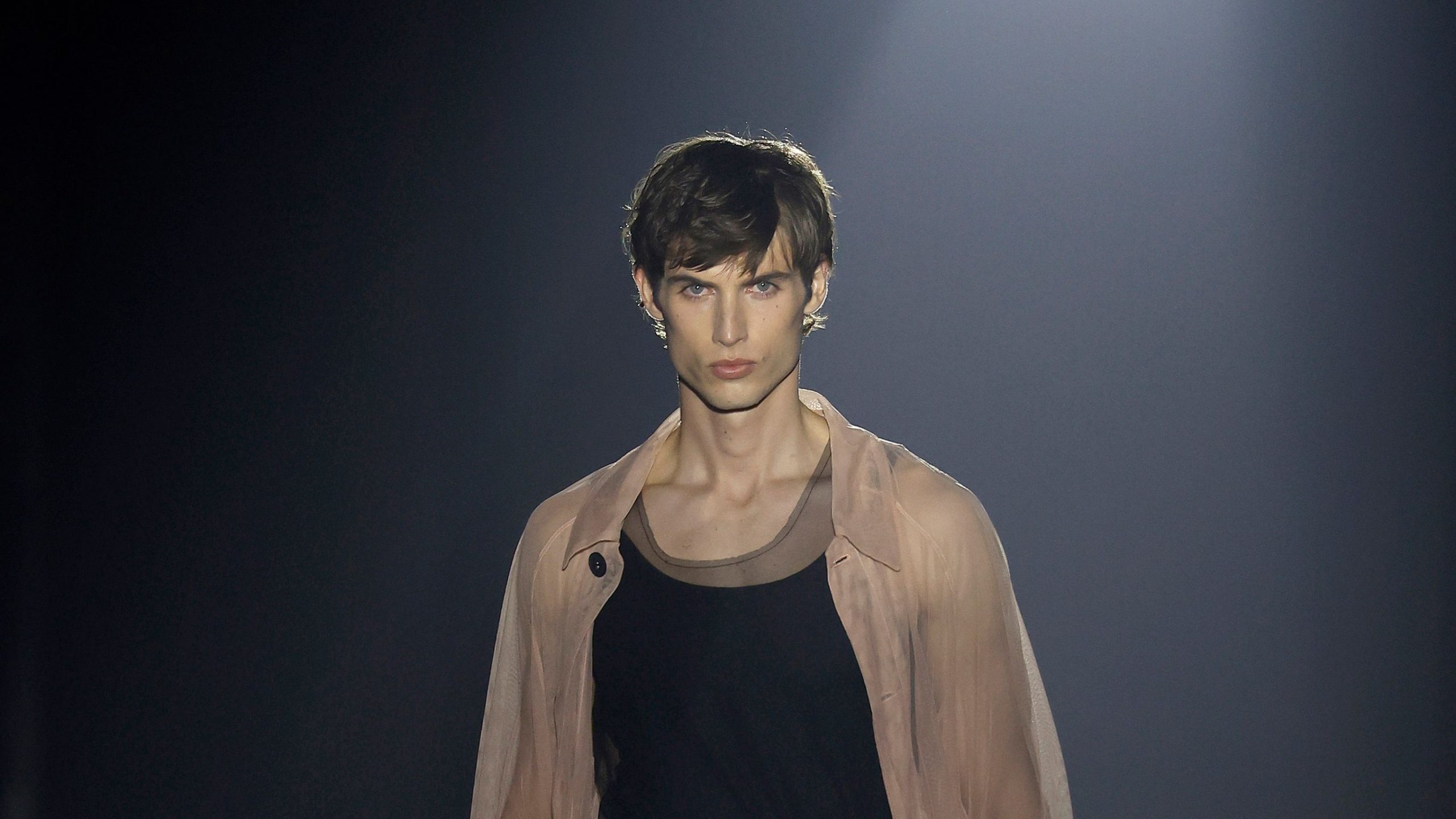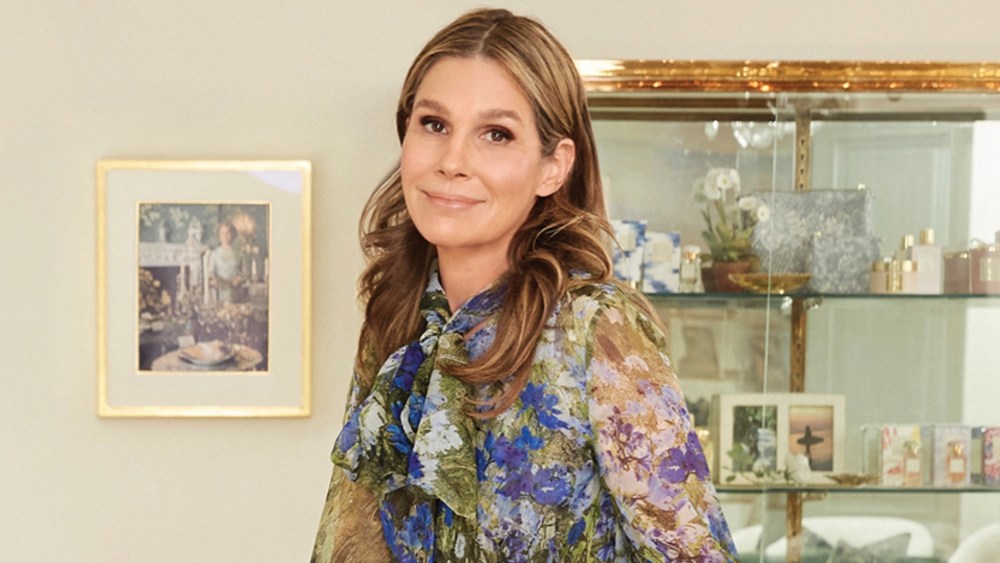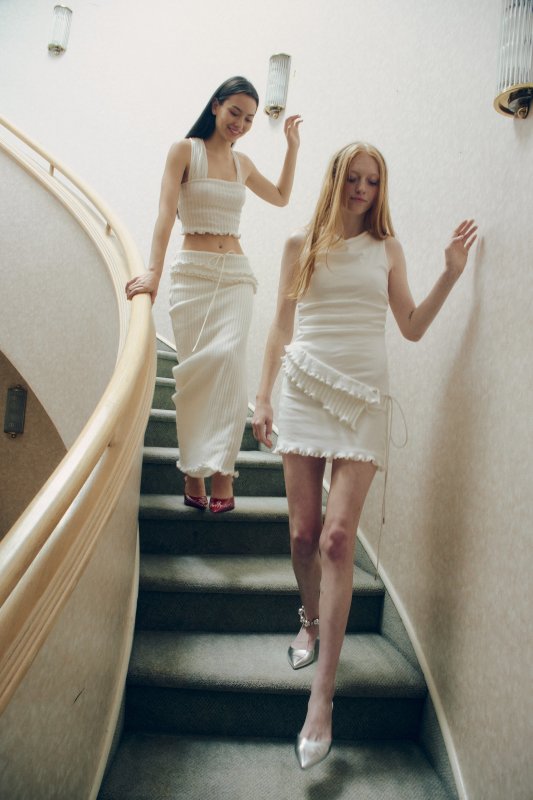
PARIS — “This is a feat driven by Jean Nouvel and his ateliers,” said Chris Dercon, managing director of the Fondation Cartier pour l’Art Contemporain, at the unveiling of the art institution’s long-awaited new home designed by the French architect on Place du Palais-Royal in Paris on Monday. “Here, he built a machine for viewing, not only within the building, but also looking onto the neighborhood and visible from it.”
For the “third step in the history and future” of the contemporary art institution, the 90,000-square-foot premises are “a new building, a new grounding, a new scale — and a new exhibition,” the museum executive said.
Opening Saturday to the public, the 2 Place du Palais-Royal offers 70,000 square feet of exhibition space plus an auditorium, a bookstore, a restaurant and, coming in the spring of 2026, “La Manufacture,” a 3,200-square-foot area earmarked for education about and through art open to all ages and profiles.

Exhibition view. Cai Guo-Qiang’s “The Earth Has Its Black Hole Too: Project for Extraterrestrials No. 16,” Mario Merz’s “Tartaruga” and Panamarenko’s “Panama, Spitsbergen, Nova Zembla.”
Cyril Marchilhacy/Courtesy of Fondation Cartier pour l’Art Contemporain
Nouvel, who was absent due to a minor medical procedure, described the new museum as “a haven for the unexpected” in a message read by Dominique Alba, chief executive officer of Ateliers Jean Nouvel.
“When entering the Louvre des Antiquaires, I had in mind the way to transform the Haussmannian architecture of the city, how to create a dialogue between this space and Paris, how to bring history in the heart of the Fondation and creation in the heart of the city,” he continued.
His approach was on the one hand “ensuring that the museum becomes an urban passage” with a building that looks and feels open from the outside. On the other, he envisioned an innovative space that can be configured at will through the use of mobile platforms.
The 500-foot-long building, on par with the length of the nearby Pompidou Center, has five of them spanning 13,500 square feet that can be repositioned to create layered vertical spaces reaching up to 110 feet in height. There are also adjustable shutters fitted on skylights through which suspended glass courtyards and gardens can be seen.
As a first exhibition, the foundation staged “Exposition Générale,” which owes its name to the sprawling showcases staged by department stores in the 19th century to highlight their latest goods.
Just as expansive is the selection of nearly 600 works spanning more than 100 artists including Luiz Zerbini, Sarah Sze, James Turrell, Jean-Michel Othoniel, Moebius, Patti Smith and David Lynch that curators Grazia Quaroni and Béatrice Grenier drew from the art institution’s collection amassed over the course of four decades. Started by Marie-Claude Beaud, the art institution’s first director who passed away earlier this year, it now comprises around 4,500 works from more than 500 artists from 50 nations.

Outside view of the Fondation Cartier pour l’Art Contemporain entrance as senn from Place du Palais-Royal.
Marc Domage/Courtesy of Fondation Cartier pour l’Art Contemporain
“It’s an exhibition that highlights high points in the past program of the Fondation Cartier through a selection of fragments of exhibitions composed from 1984 to today,” Grenier said during opening speeches. “The ‘Exposition Générale’ draws a portrait of the [institution], which has created a space of dialogue, of exploration and of artistic experimentation that attests to its interest and curiosity for alternative approaches and practices.”
But don’t expect a chronological approach of the Fondation Cartier’s contemporary art collection.
Exhibits are grouped in four themes of questioning architecture’s social role, cultural impact and use; considering the relationship between art and the living world; exploring cross-disciplinary approaches to assert experimentation as a working method, and imagining new ways of perceiving and representing reality.
“The idea was to establish new relationships between the works, the artists,” Grenier told WWD. “Since [the foundation’s collection] is mainly composed of original commissions, it aims to show how different medium, different works engage in dialogue with the space.”
Through this, the curatorial duo also wanted viewers to understand that “contemporary art is a very fast and multidisciplinary field that’s open to all and open to all interpretations from visitors,” she added.

Alessandro Mendini’s “Visage archaique” and “Petite Cathedrale,” Bodys Isek Kingelez’s “Projet pour le Kinshasa du troisième millénaire,” and Alessandra Mendini and Peter Halley’s “Code Warrior” and “OMG!”
Marc Domage/Courtesy of Fondation Cartier pour l’Art Contemporain
In parallel to “Exposition Générale,” which runs until Aug. 23, the Fondation Cartier will offer a multidisciplinary program of performances, concerts and screenings. In November and December, this will take the shape of performances coproduced with the Paris-based Festival d’Automne.
In March, Olivier Saillard will take over an exhibition space in the museum with “The Living Museum of Fashion,” an exploration of the history of everyday fashion told through ordinary and couture garments as well as “images, bodies overlaid with texts, graphic documents, photographs, archival and torn garments, as well as bodies in motion,” according to the program.
Saillard’s work will extend into the Galerie Valois, a series of Belle Époque display windows in the corridors of the nearby Palais Royal-Musée du Louvre metro station.
#Fondation #Cartier #Inaugurates #Home #Diving #Art #Collection






